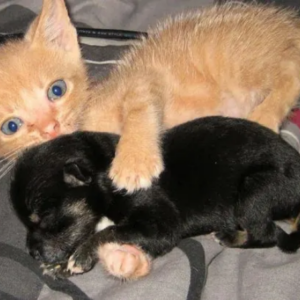With its flat, flounder-like appearance, triangle-shaped head, and tiny eyes, the Surinam toad doesn’t look like most other toads. It also doesn’t give birth like one.

In one of the strangest birth methods in the animal kingdom, babies erupt from a cluster of tiny holes in their mother’s back.

The odd characteristics don’t stop there. These amphibians have long fingers that end in four star-shaped sensory lobes that inspired their other common name, the star-shaped toad.

Surinam toads are also called stargazers because their tiny, lidless eyes sit on top of their heads.

Hunting and diet
As fully aquatic species, Surinam toads live in slow-moving water source

such as rainforest pools and moist leaf litter throughout eastern Trinidad and Tobago and much of the Amazon Basin, including its namesake country, Surinam.

Blending into their environment with brownish or olive skin and a death-like stillness, the toads both stay safe from predators and catch crustaceans, fish, and invertebrates in the water.

To sense prey, the nocturnal creatures use the sensory organs at their fingertips.

They’ll then suck the animal into their teethless, tongueless mouths, or scoop them up with their hands.

Mating and reproduction
Males call to females by snapping a bone in their throat, the hyoid, which makes a sound underwater.

When he finds a receptive female, he grasps her around the back with his arms, a position called amplexus.

Interlocked, the pair will somersault through the water for hours until the female releases about a hundred eggs.

The male fertilizes the eggs, then pushes them onto her back.

A thick layer of skin will grow over the eggs until they are nestled in protected, honeycomb-like pockets.

Baby toads don’t go through a larval or tadpole stage, instead erupting from mom’s back as fully formed, half-inch toadlets after about three to four months.

Though such back-breaking labor may seem odd, it’s actually safer for the newborns.

Sealed into mom’s back, they’re less vulnerable to predators, making toads are a great example of parental care. Newly hatched toadlets swim away on their own.

Conservation status
The Surinam toad population is not currently in danger, though its habitat is threatened by human encroachment, such as logging, farming, and ranching.

–

–

–

–

–

–

–

–

–

–

–

–

–

–

Ref: kidadl, wikipedia, nationalgeographic, animals.sandiegozoo, honoluluzoo,
Pic: wikipedia, animals.sandiegozoo, pinterest, American Museum of Natural History, fishingthai, talitabateman, honoluluzoo, catapult, Natural History Museum, biolib, clipart-history,





